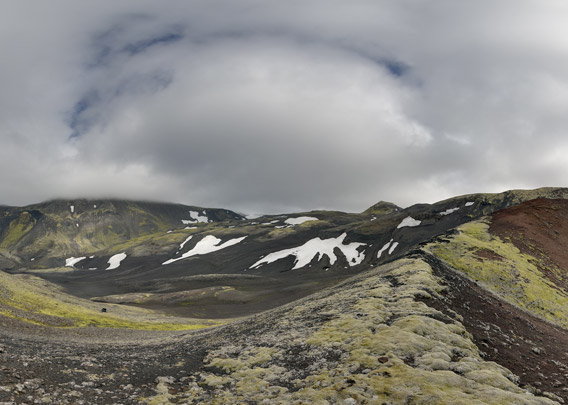
Dagnyhaugen
360°-Panoramas
Dagnyhaugen (“Dagny-Hill”) is a smaller parasitic crater, 146 metres high, in Ekerolddalen, the most common route for attempts to climb Beerenberg. Dagny-Haugen is directly next to Eskkrateret, a crater seen and climbed by the famous whaler and discoverer William Scoresby, who named it after his ship, the “Esk of Whitby”. Both Dagnyhaugen and Eskkrateret make a morphologically fresh impression and are certainly young, geologically speaking. The crater of Dagnyhaugen is open to the east, and a clearly visible lava flow left the crater through this opening. Many young volcanic bombs are now lying on the surface of this lava flow.
- pano anchor link: #Dagnyhaugen_08Juli14_051
William Scoresby observed volcanic activity at Eskkrateret in 1818, but he was not the first one to do so. Already in 1732, Johan Anderson, who was (or became later) mayor of Hamburg, saw “big flames resembling strong lightning and a horrible banging and thundering, and finally a big and thick cloud of steam. Which put the ships in great horror, as they could not sail away, and they could not know, what would follow for them from this fire and what would come over them. But the fire lasted only an Ethmal, as the sailors are saying, that is 24 hours, and the mountain did not open itself on the top either, and much less did it throw out stones or anything of this kind.”
(own translation from a quotation taken from the Jan Mayen book).
- pano anchor link: #Dagnyhaugen_08Juli14_012
copyright: Rolf Stange

